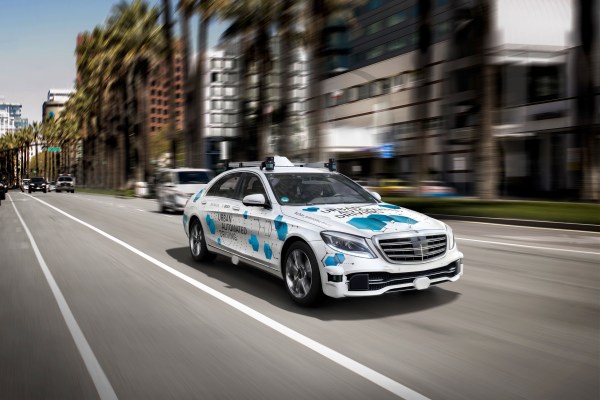Udacity and Mercedes-Benz’s North American R&D lab have developed curriculum for a sensor fusion nanodegree, the latest effort by the online education startup to meet high demand for skills related to autonomous vehicles and to duplicate the success it has had with its self-driving car engineer program.
Enrollment for the sensor fusion degree opened up Tuesday.
Udacity specializes in “nanodegrees” on a range of technical subjects that include AI, deep learning, digital marketing, VR and computer vision.
The new sensor fusion nanodegree is one of the recent additions and changes enacted by Udacity’s co-founder Sebastian Thrun as part of a larger turnaround plan aimed at bring costs in line with revenue without hurting growth.
The sensor fusion program is made up of four courses and is intended to take about four months to complete. Students will learn about lidar obstacle detection, radar obstacle detection, camera and lidar data fusion, and Kalman Filters. Those who finish the degree should be able to work with lidar, radar, and cameras — sensors that are used on the vast majority of autonomous vehicles.
A group of MBRDNA employees are enrolled in the self-driving car program as part of an Enterprise training pilot.
“There’s no such thing as self-driving car generalists,” Thrun told TechCrunch. “Companies are looking for something specific. And the hottest thing around right now is sensor fusion.”
And despite the AV industry dipping into the “trough of disillusionment” Thrun said there is still a lot of demand for skilled workers.
“It’s easier to get a job right now than raise money from investors,” Thrun said. “All of these companies like Zoox and Aurora, Waymo, Cruise and Tesla are hiring like crazy.”
For instance, GM’s self-driving car unit Cruise announced in March plans to hire hundreds of employees through the end of the year, doubling its engineering staff.
Udacity and Sunnyvale,Calif.,-based Mercedes-Benz Research & Development North America (MBRDNA) have partnered on nanodegree programs before. In 2016, the two companies collaborated on a self-driving car engineer nanodegree — a program that attracted thousands of students and would lead to the spinout of AV startup Voyage. More than 21,000 students from 120 countries have enrolled in that program.
Udacity doesn’t break out graduation rates for individual programs, making it difficult to assess how many people have completed the self-driving car engineer degree or have gone on to jobs in the field.
Udacity has reported that a 34 percent graduation rate over its more than 30 nanodegree programs. The company also notes that nanodegree program graduates have landed new jobs with Audi, BMW, Bosch, Jaguar Land Rover, Lyft, NVIDIA, and Mercedes-Benz. Mercedes employs more than 40 nanodegree program graduates globally, according to Udacity.
Udacity also other nanodegree related to the industry, including an introduction to self-driving cars and flying cars.
In April, Udacity laid off about 20 percent of its workforce and is restructuring its operations. Udacity now employs 300 full-time equivalent employees and about 60 contractors. The company has also added new services aimed at retaining students, including a technical mentorship program. Since May 1, every Udacity student has access to technical mentors, expert reviewers, career coaches, and personalized learning plans.
The company experienced growth in 2017 and revenue that increased 100 percent year-over-year thanks to some popular programs like its self-driving car and deep learning nanodegrees. And while new programming was added in 2018, the volume slowed and failed to attract the same attention and enrollment as its predecessors. Meanwhile, costs ballooned. After CEO Vishal Makhijani left in October and Thrun stepped in. Thrun, who founded Google’s moonshot factory X, is also CEO of flying-car startup Kitty Hawk Corp.
